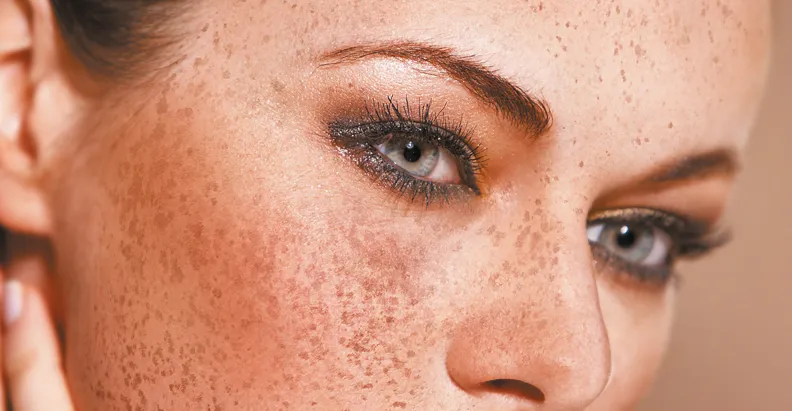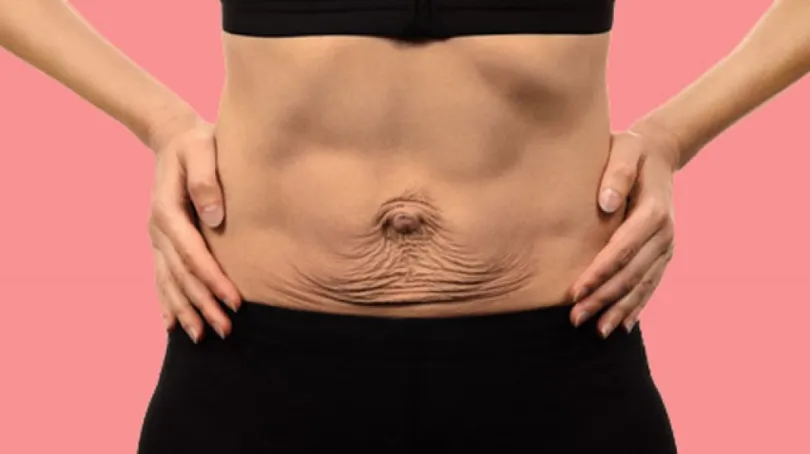Every mother knows that when you’re expecting your first child, those months of pregnancy are full of firsts. From not being able to zip up your jeans, to feeling tiny legs growing in your belly. The same goes for the newborn period, when every cry, movement, smile, and laugh are captivating (and of course, a bit exhausting).
While during these early stages there are many breathtaking moments you’ll cherish, there are some moments you’d probably want to skip, or at least forget. Due to hormonal changes, breastfeeding, and weight gain, there are some skin issues that aren’t very comfortable, to say the least, when you’re pregnant or a new mom. Although all these issues are treatable, some of these stretch marks might be a bit more enduring.
That’s why we’ve gathered the best tips from top dermatologists to manage these skin problems:

Stretch Marks:
The recommended weight gain for women during pregnancy averages between 25 to 35 pounds. This weight mostly goes straight to the stomach or breasts and can sometimes result in red and purple stretch marks. While many products claim to help prevent this outcome, Dermatologist Dr. Arash Akhavan explains that the only guaranteed way to reduce the risk of these stretch marks is based on genetics.
However, Dr. Stanley Kovak, another dermatologist, states that certain specific ingredients found in lotions and oils can be helpful. When purchasing a lotion or oil, check the back label for “alpha hydroxy acid,” which can help minimize the appearance of stretch marks. Another way to minimize stretch mark issues? “Exercise can greatly help reduce or prevent stretch marks,” says Dr. Kovak. Thanks to frequent movements and stretches, your skin might win the battle against these signs as it becomes stronger, more flexible, and better conditioned. For post-pregnancy treatment, you can also look into non-invasive skin resurfacing lasers to improve those pesky stretch marks from pregnancy.
Try: Mama Mio The Tummy Rub Butter

Melasma:
An unsettling and rather unpleasant side effect of pregnancy for women is melasma, a skin hyperpigmentation issue. Although it can occur anywhere on your body, Dr. Kovak explains it mainly appears on the face – cheeks, forehead, and upper lip, forming red pigmented spots. He also explains that this condition is often referred to as “the mask of pregnancy” and can sometimes be exacerbated by sun exposure. Just like any other time in your life, it’s very important to wear a fine, gentle, and broad-spectrum sunscreen to care for not only your health and skin but also that of your growing baby! The good news about melasma is that it commonly resolves after childbirth and, if not, can be treated with laser treatment after breastfeeding.
Try: Organic Pharmacy Cellular Protection Sun Cream SPF 50

Acne:
Dr. Akhavan explains that due to fluctuating hormone levels (hey, mood swings!), many women experience breakouts during pregnancy. Although it’s normal, the bad news is that many acne treatments are not allowed during pregnancy. “It’s very important to avoid some acne medications, even over-the-counter ones may potentially have harmful ingredients for your baby. Always check with a dermatologist or obstetrician to ensure the acne products you’re using are safe,” he notes. Paying attention to ingredients is important, as Dr. Kovak notes that cleansers with “alpha hydroxy acid” can help reduce unwanted acne.
Try: Belly Skin Care Blemish-Fighting Face Wash
Loose Skin:
Congratulations! You’ve had your beautiful baby and, after six months, they’re finally sleeping through the night. You’ve shed almost all of the pregnancy weight and are getting into the rhythm of being a mom, with just one pesky problem: excess skin around your stomach won’t tighten. “Many women complain of excess skin all over the body post-pregnancy, mainly on the breasts, abdomen, thighs, and arms. Elevated estrogen levels may result from collagen loosening within the dermis, leaving that excess skin after childbirth and breastfeeding,” explains Plastic Surgeon Dr. Raffy Karamanoukian. Once you’ve had your last child, Dr. Karamanoukian suggests radiofrequency treatments to help tighten the affected skin areas, which he says is a popular trend for mothers. “Treatment of loose skin around the breasts and belly are the most popular post-pregnancy cosmetic treatments. In fact, tissue tightening is rapidly surpassing plastic surgery as the top mommy makeover treatment post-pregnancy,” he states. As a home treatment, try applying firming creams or lotions designed to improve blood circulation and tone the skin, helping the skin appear tighter and smoother.

Try: Eminence Organics Coconut Firming Body Lotion
Weaker Nails:
Although when you were taking prenatal vitamins, you might have loved your strong and silky strands and rapidly growing nails, once you’re jumping for joy over those two blue test lines, your manicure might not be the same as before. Dr. Kovak explains that many women experience nail breakage or rougher nails during pregnancy. He says that maintaining nail care during pregnancy is crucial, just make sure to use non-toxic polish brands. Although you might be dissatisfied with your digits during those months, he notes that most of the time your nails will likely return to their normal appearance.














